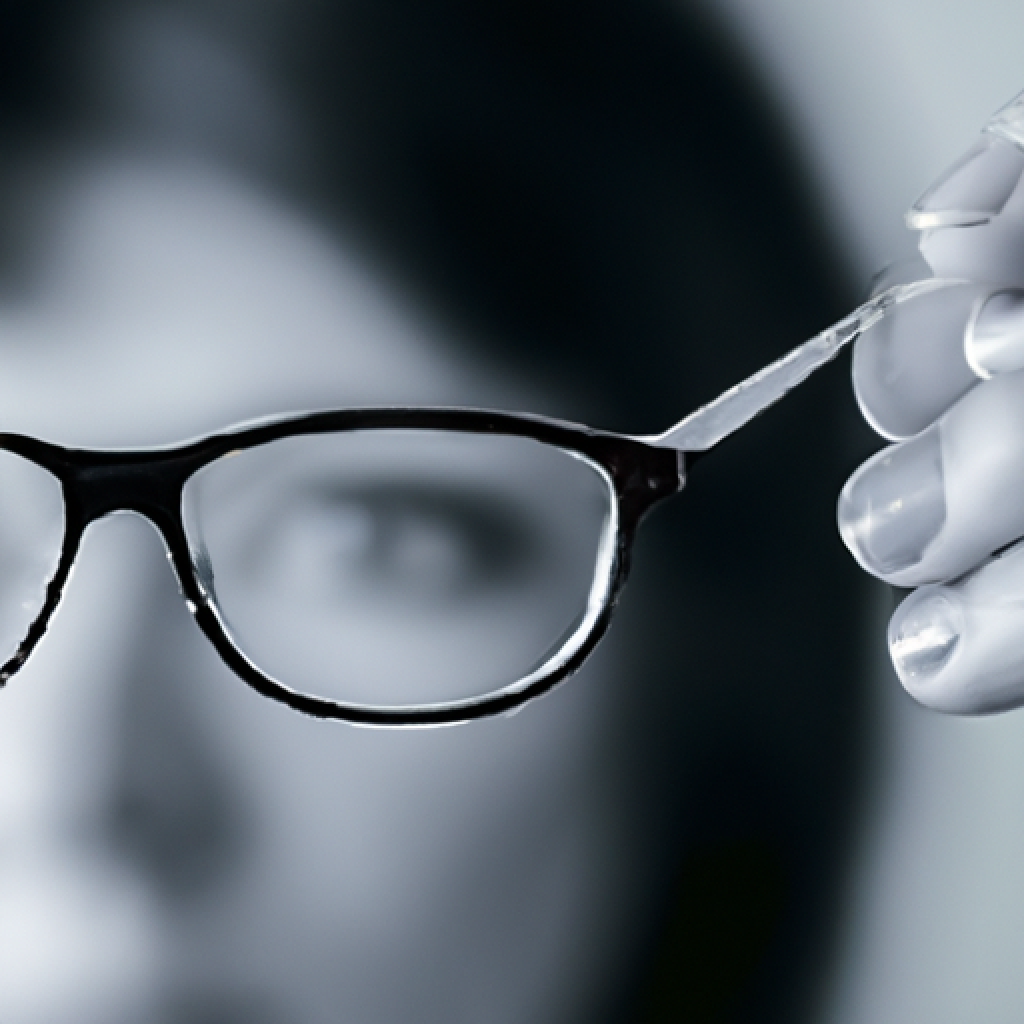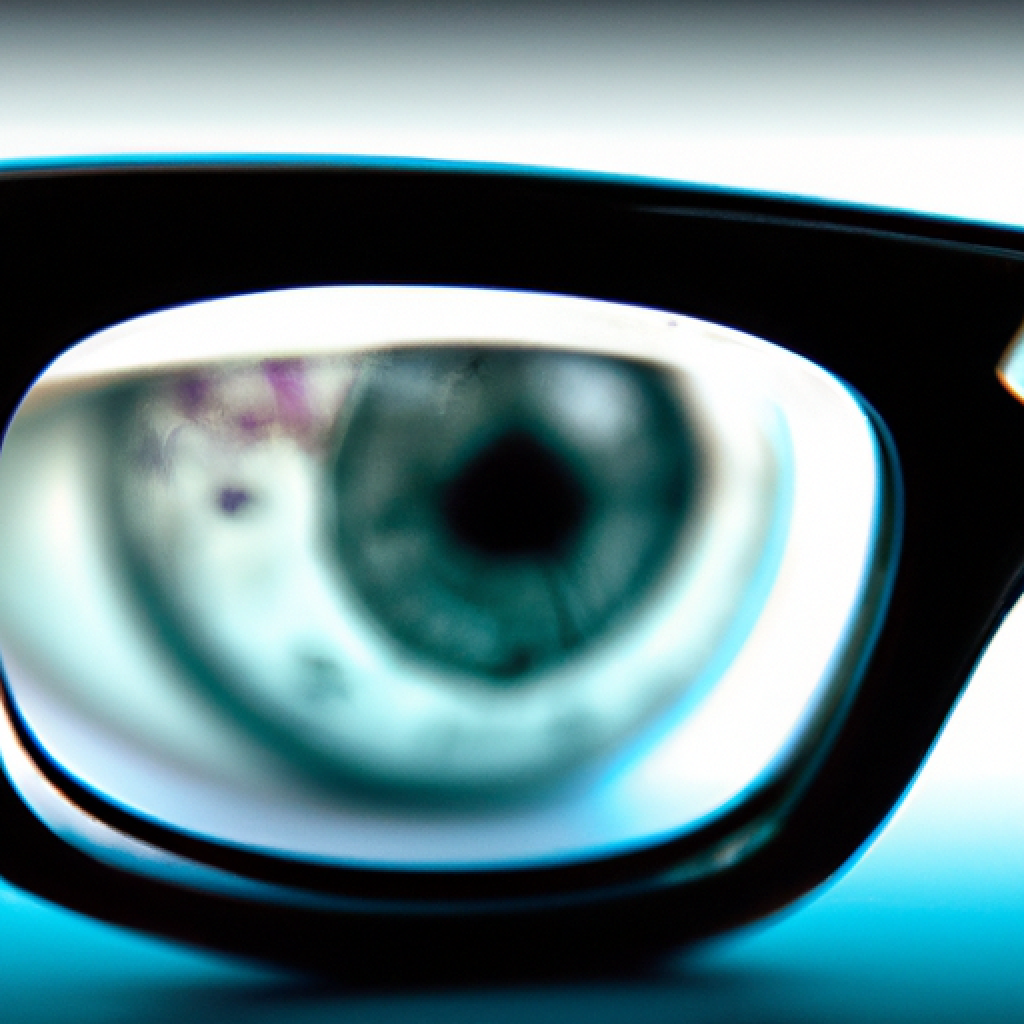What Are The Disadvantages Of Anti-reflective Coating?

I never thought much about anti-reflective coating until I got a new pair of glasses and noticed a strange glare whenever light hit them. Curiosity got the best of me, and I decided to do some research on this seemingly innocent coating. To my surprise, I discovered that while anti-reflective coating has its benefits, it also comes with its fair share of disadvantages. So, if you’re interested in learning about the downsides of this technology, stick around because I’m about to spill the beans.

Reduced Durability
The coating may chip or scratch
When it comes to the disadvantages of anti-reflective coating, one of the first things that comes to mind is the reduced durability of the coating. Over time, the coating may start to chip or scratch, compromising its effectiveness. These chips and scratches can occur due to regular wear and tear, mishandling of the coated surfaces, or contact with sharp objects. Once the coating is damaged, it not only affects the aesthetic appeal of the surface but also diminishes the anti-reflective properties, leading to reduced clarity and visibility.
Necessity of careful cleaning
Another aspect that affects the durability of anti-reflective coating is the necessity for careful cleaning. While regular cleaning is essential to maintain the coating’s performance, extra care must be taken to avoid any mishaps. Improper cleaning techniques or the use of harsh cleaning agents can lead to damage to the coating. Special cleaning materials are often required to ensure that no scratches or abrasions occur during the cleaning process. This added care and precaution can be a hassle for individuals who want a low-maintenance solution.
Reduced lifespan of the coated surfaces
The reduced durability of anti-reflective coating ultimately contributes to a shorter lifespan for the coated surfaces. Compared to untreated surfaces, those with anti-reflective coating may require replacement more frequently. This can be costly and inconvenient for individuals who have invested in products or surfaces with this coating. It is crucial to consider the potential need for replacement and factor it into the decision-making process when opting for anti-reflective coating.
Lack of Effectiveness in Some Situations
Limited effectiveness in low light
While anti-reflective coating significantly improves visibility in normal lighting conditions, it may not be as effective in low light situations. In such instances, the coating may not adequately reduce glare, resulting in reduced visibility. This can be particularly problematic when using devices or products with anti-reflective coating in dimly lit environments or during nighttime activities. It is important to keep this limitation in mind and consider alternative options for optimal visual performance in low light.
Ineffectiveness against certain types of glare
Anti-reflective coating is primarily designed to reduce glare caused by reflections from external light sources. However, it may not be equally effective against all types of glare. Glare caused by direct sunlight, artificial lighting, or other external light sources is significantly reduced with this coating. However, it may not be as successful in reducing glare from sources within the field of vision, such as oncoming headlights when driving at night. In these situations, anti-reflective coating may not provide the desired level of glare reduction, compromising visibility and potentially causing discomfort.
Decreased visibility in certain weather conditions
While anti-reflective coating can be highly beneficial in normal weather conditions, it may not perform as well in certain situations. For example, in rainy or foggy weather, the coating may become less effective due to the moisture or condensation on the surface. This can result in decreased visibility and hinder the overall performance of the coating. Additionally, extreme temperature variations or high humidity levels can impact the anti-reflective properties and reduce their effectiveness. These limitations should be considered, especially for individuals living in regions with challenging weather conditions.
Increased Cost
Higher initial investment
One of the major disadvantages of anti-reflective coating is its higher initial investment compared to untreated surfaces. The additional cost is associated with the advanced technology and materials used in the production of the coating. When opting for products or surfaces with anti-reflective coating, individuals should be prepared to pay a premium for the enhanced visual benefits it offers. This increased cost may not be feasible for those on a tight budget or looking for more cost-effective alternatives.
Potential need for replacement
As mentioned earlier, the reduced durability of anti-reflective coating can lead to a shorter lifespan for the coated surfaces. This, in turn, may necessitate more frequent replacements. Having to replace the coating multiple times over a product’s lifespan can significantly increase the overall cost and inconvenience. Additionally, the need for replacement may also be influenced by other factors such as scratches, damages, or wear and tear. Considering the potential expenses associated with the replacement, it is important to weigh the advantages against the long-term costs before choosing anti-reflective coating.
Higher costs for repair or maintenance
Apart from the initial investment and potential replacement costs, there may be higher expenses involved in the repair or maintenance of anti-reflective coating. Due to the delicate nature of the coating, specialized professionals may be required for any repair work. This can further add to the overall cost, especially if the repair needs to be done by a certified technician or at a specialized facility. Moreover, special care and treatment may be necessary to prevent scratches or damages during routine cleaning, which can also contribute to increased maintenance costs. Individuals considering anti-reflective coating should factor in these long-term expenses to make an informed decision.
Cleaning Difficulties
Special cleaning materials required
Cleaning surfaces with anti-reflective coating often necessitates the use of special cleaning materials. Ordinary cleaning agents may contain harsh chemicals or abrasive substances that can damage or scratch the coating. To avoid this, specific cleaning solutions specifically formulated for anti-reflective coating must be used. These specialized cleaning materials may not be easily accessible or readily available, making the cleaning process more cumbersome and time-consuming. The need to procure and use these specific cleaning products adds an extra layer of complexity to the maintenance routine of anti-reflective coated surfaces.
Increased cleaning frequency
In comparison to untreated surfaces, anti-reflective coating may require more frequent cleaning to maintain its optimal performance. Fingerprints, smudges, and dirt particles tend to be more visible on coated surfaces, affecting the clarity and visual experience. Depending on the frequency of use and the environment in which the coated surfaces are exposed, individuals may find themselves having to clean the surfaces more often. This increased cleaning frequency can be a hassle, especially for those seeking low-maintenance solutions or for individuals with busy schedules.
Potential for damage during cleaning
While regular cleaning is essential for anti-reflective coated surfaces, there is always a risk of causing damage during the process. The coating is susceptible to scratches and abrasions if not handled with care or if improper cleaning techniques are used. Even with the use of specialized cleaning materials, accidents can happen, particularly when dealing with delicate surfaces. Any damage to the coating can compromise its anti-reflective properties and result in reduced visibility and clarity. This potential risk during the cleaning process may deter individuals who prefer easy and worry-free maintenance.

Visibility Issues
Distortions or artifacts
Although anti-reflective coating aims to improve visibility and clarity, it can sometimes lead to distortions or artifacts. These distortions may manifest as subtle optical flaws or imperfections on the surface, affecting the overall visual experience. While the coating reduces reflections, there is a possibility of introducing new visual anomalies, especially when viewed from certain angles or under specific lighting conditions. These distortions can be distracting and may be particularly noticeable in situations where high precision and attention to detail are required, such as reading fine print or analyzing intricate images.
Potential for color shifts
Another potential visibility issue with anti-reflective coating is the possibility of color shifts. Depending on the specific coating used and how it interacts with light, there may be a slight alteration in color perception. Colors may appear slightly warmer or cooler, leading to a perceptible difference compared to untreated surfaces. While these color shifts may be subtle in most cases, they can still impact the overall visual experience and potentially affect tasks that require accurate color representation, such as photography or visual design. Individuals with specific color sensitivity or profession-related requirements should consider this possible disadvantage.
Issues with clarity
While anti-reflective coating generally aims to enhance clarity and visibility, it may not always provide the desired level of sharpness. Some individuals have reported a slight decrease in overall sharpness or a softening effect on the treated surfaces. This can be particularly noticeable when viewing high-definition content or when visual precision is crucial. The coating may unintentionally introduce a slight blur or reduce the crispness of fine details, impacting the overall visual quality. This potential compromise in clarity should be taken into consideration, especially for individuals who highly value sharp and precise visuals.
Sensitive to Scratches
Easy to scratch
One of the main disadvantages of anti-reflective coating is its susceptibility to scratches. The delicate nature of the coating makes it more prone to damage, even with slight contact or minor abrasions. Everyday objects such as keys, dust particles, or accidental brushes can leave visible scratches on the surface, compromising the anti-reflective properties. These scratches not only affect the aesthetic appeal of the coated surfaces but can also create distracting visual anomalies. Individuals who opt for anti-reflective coating need to be aware of this sensitivity and take extra precautions to prevent any accidental scratches.
Scratches on the anti-reflective coating can cause problems
When scratches do occur on the anti-reflective coating, they can cause various problems. First and foremost, the scratches can significantly reduce the clarity and visibility of the surface. They can create distracting visual distortions or artifacts, rendering the coating less effective in its primary purpose. Additionally, the scratches can accumulate dirt particles or oils, making them more apparent and difficult to clean. This combination of reduced visibility and cleanliness issues can diminish the appeal and functionality of the coated surface. Proper care and treatment are necessary to prevent and address any scratches to maintain optimal performance.
May require special care and treatment to prevent scratches
To protect anti-reflective coated surfaces and prevent scratches, it is crucial to adopt special care and treatment practices. One way to minimize the risk of scratches is to regularly clean the surfaces using the appropriate cleaning methods and specialized cleaning materials. Additionally, using protective cases or covers for devices or products with coated surfaces can provide an extra layer of defense against accidental scratches. It is important to be mindful of the potential risks and adopt proactive measures to prevent scratches, ensuring the prolonged effectiveness and visual appeal of the anti-reflective coating.

Influence on Optical Properties
Alteration of the material’s refractive index
An inherent characteristic of anti-reflective coating is its ability to alter the refractive index of the material it is applied to. This alteration is what allows the coating to reduce reflections and glare, enhancing visibility. However, this change in the refractive index can also introduce some unintended optical effects. For example, it may slightly impact the way light is transmitted through the coated surface, potentially leading to subtle changes in visual perception. While these alterations may be minimal in most cases, individuals with specific optical sensitivity or requirements should be cautious of any potential impact on their visual experience.
Possible impacts on image quality
In some cases, the presence of anti-reflective coating can have implications for image quality, especially in applications such as photography or videography. Since the coating modifies the way light interacts with the surface, it can indirectly affect the accuracy and fidelity of captured images or footage. Depending on the specific coating and the equipment used, there may be minor differences in color representation, contrast, or sharpness. These variations may be subtle for general use, but professionals or enthusiasts who have strict image quality expectations should account for any potential impacts before choosing anti-reflective coating for their equipment.
Potential distortions caused by coating
While anti-reflective coating aims to improve visual clarity, it can sometimes introduce distortions of its own. The alteration in the refractive index and the application process can result in slight optical anomalies on the surface. These distortions may manifest as subtle changes in the perceived shape, size, or location of objects, especially when viewing the coated surface from specific angles. While these distortions are usually minor and may go unnoticed by most individuals, they can be an important consideration for those who rely on precise visual perception, such as professionals in industries like architecture or engineering.
Time-Consuming Application Process
The process of application is longer
Applying anti-reflective coating is a time-consuming process that requires precision and expertise. The surface to be coated must be thoroughly cleaned and prepared before the coating can be applied. Additionally, multiple layers of the specialized coating are typically required to achieve the desired anti-reflective properties. Each layer must be applied carefully, with proper curing and drying times between them. This multi-step application process often translates into a longer overall time for the coating to be successfully and effectively applied, delaying the availability of the final product or surface.
Specialized professionals required for application
Given the complexity and precision involved in the application of anti-reflective coating, specialized professionals are often required for the task. These professionals have the knowledge and skills to ensure that the coating is applied evenly and accurately. Their expertise also ensures that the coating adheres properly to the surface, reducing the risk of imperfections or premature wear. Relying on specialized professionals for the application process can add an additional layer of inconvenience or cost, particularly if these professionals are not readily available or accessible.
Delay in product completion
Due to the time-consuming application process and potential dependency on specialized professionals, the presence of anti-reflective coating can lead to delays in the completion of products or surfaces. This delay can be a source of inconvenience, especially when there are tight deadlines or time-sensitive requirements. Individuals or businesses seeking quick turnaround times may need to consider alternative options that do not involve anti-reflective coating. It is important to factor in these potential delays and manage expectations accordingly when choosing products or surfaces with this coating.

Variability in Quality
Differences in quality across producers or brands
One of the key disadvantages associated with anti-reflective coating is the variability in quality across different producers or brands. The effectiveness and durability of the coating can vary depending on the materials used and the manufacturing process employed. Some manufacturers may prioritize cost over quality, resulting in coatings that are less durable or have lower anti-reflective capabilities. It is essential for individuals to research and choose reputable brands or producers to ensure they receive a high-quality coating that meets their requirements. Reading reviews and consulting professionals can help in making an informed decision.
Variable effectiveness
In addition to differences in quality, the effectiveness of anti-reflective coating can vary based on various factors. The specific environment, lighting conditions, and usage patterns can influence the performance of the coating. While the coating may deliver excellent results in certain situations or applications, it may not be as effective in others. This variability in effectiveness can be challenging for individuals who require consistent performance in different settings. Testing and understanding the limitations of the coating in specific scenarios become essential to manage expectations and ensure a satisfactory experience.
What Causes Anti-reflective Coating to Wear Off?
Anti-reflective coating longevity factors play a crucial role in determining how long these coatings remain effective. External factors like exposure to dirt, oils, and abrasion can lead to gradual wear and reduce the coating’s effectiveness over time. Additionally, poor cleaning techniques, use of harsh chemicals, or contact with rough surfaces can accelerate the degradation process. Thus, understanding these factors and implementing proper care measures can help maintain the longevity of anti-reflective coatings.
Environmental Factors
Potential damage due to sun exposure
Anti-reflective coating can be susceptible to damage from prolonged exposure to the sun. The ultraviolet (UV) rays in sunlight can gradually degrade the coating, leading to a decrease in its effectiveness and potentially causing discoloration or visual distortions. Individuals who spend significant time outdoors or use products with anti-reflective coating in sunny environments should be particularly mindful of this potential disadvantage. Protective measures such as using UV-blocking coatings or keeping products out of direct sunlight when not in use can help mitigate the risk of damage from sun exposure.
Sensitivity to temperature and humidity changes
Fluctuations in temperature and humidity levels can impact the performance and longevity of anti-reflective coating. Extreme temperature variations or exposure to high humidity levels may cause the coating to degrade or become less effective over time. This can lead to a reduction in visual clarity and other potential issues. Individuals living in regions with challenging weather conditions should be aware of these sensitivities and consider the potential impact on the coating’s durability. Taking appropriate protective measures, such as storing products in controlled environments or using additional coatings for temperature/humidity protection, may help mitigate these risks.
Possible need for frequent replacement in harsh environments
Harsh environmental conditions, such as exposure to chemicals, pollutants, or abrasive substances, can accelerate the deterioration of anti-reflective coating. These elements can react with the coating materials, causing discoloration, damage, or a decrease in its effectiveness. Individuals working in environments with high chemical exposure, industrial settings, or other harsh conditions should be prepared for the need for more frequent replacement of the coating. This increased frequency can result in additional costs and maintenance efforts, which should be taken into consideration when deciding on the suitability of anti-reflective coating for specific applications.
In summary, while anti-reflective coating offers significant visual benefits, it is important to consider its potential disadvantages. The reduced durability, limitations in certain situations, increased cost, cleaning difficulties, visibility issues, sensitivity to scratches, influence on optical properties, time-consuming application process, variability in quality, and environmental factors should all be carefully weighed before opting for this coating. By having a comprehensive understanding of the limitations and trade-offs, individuals can make informed decisions about incorporating anti-reflective coating into their products or surfaces.








